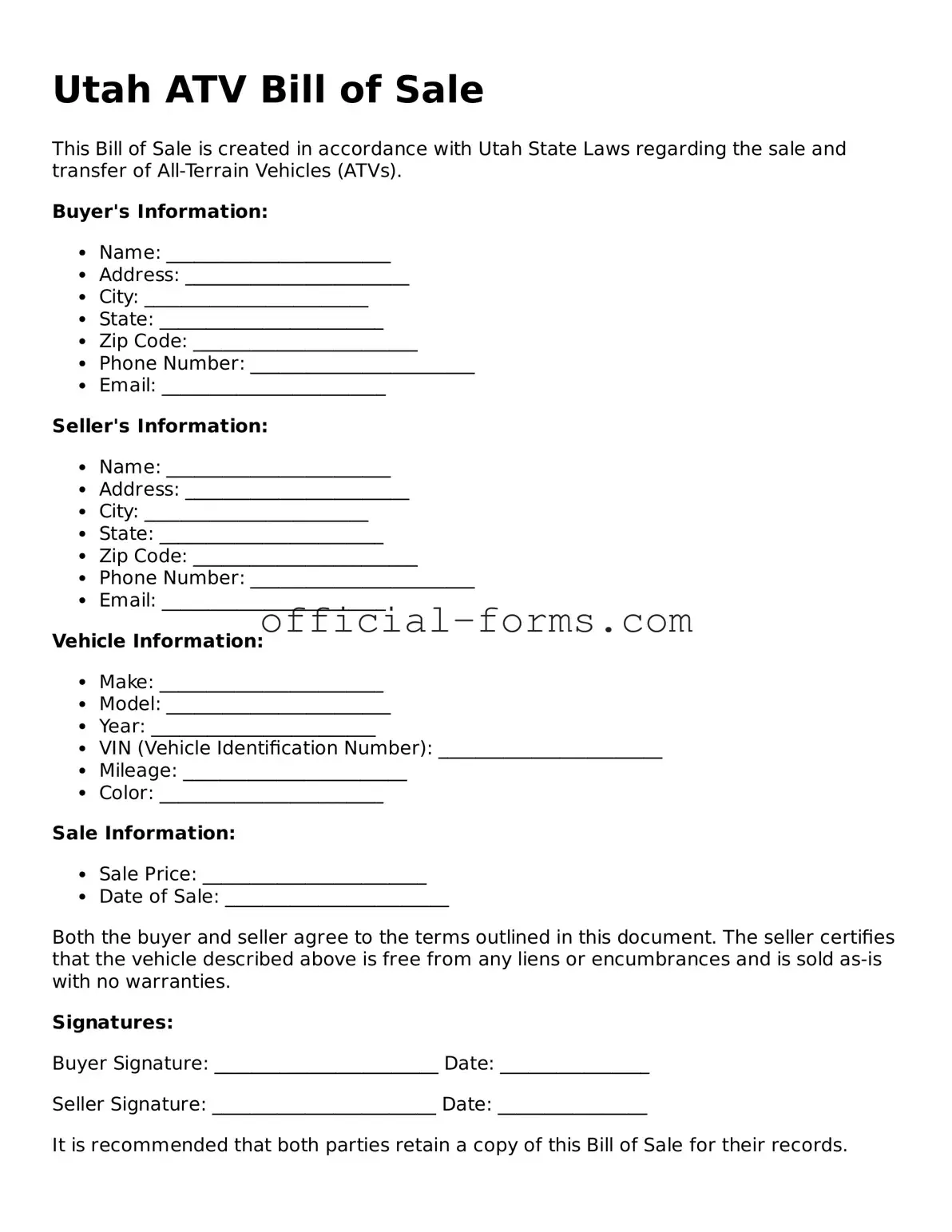When completing the Utah ATV Bill of Sale form, individuals often make several common mistakes that can lead to complications down the line. One frequent error is the omission of essential information. Buyers and sellers must provide accurate details, including the full names, addresses, and contact information of both parties. Missing this information can render the document incomplete and may affect the transfer of ownership.
Another common mistake is failing to accurately describe the all-terrain vehicle being sold. It is vital to include specific details such as the make, model, year, and Vehicle Identification Number (VIN). Inaccurate or vague descriptions can create confusion regarding the vehicle's identity and may lead to disputes between the buyer and seller.
Additionally, many individuals neglect to include the sale price. The Utah ATV Bill of Sale form requires the sale price to establish the transaction's legitimacy. Without this information, the document may not serve its intended purpose and could complicate future transactions or legal matters.
People also often forget to sign the form. Both the buyer and seller must sign the Bill of Sale to validate the transaction. A lack of signatures can result in the document being considered void, which can create challenges in proving ownership or completing registration with the state.
Another mistake involves not providing a date on the form. Including the date of the transaction is crucial for record-keeping purposes. This information helps establish when the sale took place and can be important for tax and legal reasons.
Finally, individuals may overlook the need for a witness or notary signature, depending on the specific requirements of the transaction. While not always necessary, having a witness can add an extra layer of verification to the sale. In some cases, a notary may be required to ensure that the signatures are legitimate and that the transaction is legally binding.
